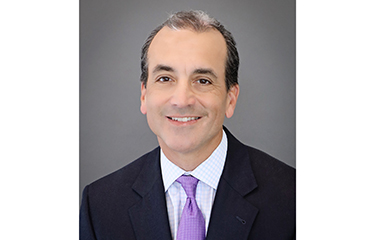Lunenberg, Nova Scotia, Canada-based High Liner Foods has reported double-digit increases in sales value as higher volumes at high prices boosted the company’s earnings.
The company’s Q1 financial results for the 13 weeks ending 2 April, 2022, indicate it earned USD 294.7 million (EUR 279.8 million), a 21.1 percent, or USD 51.3 million (EUR 48.7 million), increase over the USD 243.4 million (EUR 231 million) it earned in the same period in 2021. The higher revenue was coupled by higher sales volumes – High Liner sold 73.4 million pounds of product in Q1, 5.2 percent higher than the 69.8 million pounds sold in the same period in 2021.
"We had a strong start to the year, growing sales and volumes as we strived to satisfy the continued strong demand for our products from retail and foodservice customers and consumers," High Liner Foods President and CEO Rod Hepponstall said. "We grew market share across our business, increased adjusted EBITDA and gross profit and are more profitable today than prior to the onset of the COVID-19 pandemic despite ongoing inflationary and supply chain pressures."
The company’s gross profit increased by 7.5 percent, or USD 4.3 million (EUR 4 million) to USD 62 million (EUR 58.8 million) in Q1. Its adjusted earnings before interest, taxes, depreciation and amortization (EBITDA) also increased, reaching USD 28.3 million (EUR 26.8 million) in Q1 2022 compared to USD 27.8 million (EUR 26.4 million) in 2021 – an increase of 1.8 percent.
The company said that part of the positive performance can be attributed to a rebound in demand from foodservice and institutional customers – demand which the company has been struggling to satisfy due to “continuing global supply-chain challenges.” The company said those challenges impacted High Liner’s sales volume by 5 percent, or four million pounds, in Q1.
Shipping delays, raw material supply issues, labor problems, shipping container availability, port congestion, and more were all cited by the company as ongoing issues, but the company took “various steps to mitigate these supply challenges” in order to reduce the impact on its customers, it said.
The company said it raised prices in the first quarter to offset some of the additional costs it has been facing due to inflation.
“These pricing actions, along with favorable product mix due to increased branded and commodity sales, resulted in a 21.1 percent increase in net sales in the first quarter versus a year ago,” High Liner said.
The return of the U.S. foodservice sector following the worst of the COVID-19 pandemic has been a boon for High Liner, and the company attributed part of its positive performance to continued demand in the retail market.
"We believe the quality, convenience, and variety of products and price points across our portfolio, especially related to value-add, will ensure sustained customer and consumer demand across foodservice and retail customers over the long term," Hepponstall said.
High Liner CFO Paul Jewer said in the company's results call that rising inflation has not dampened interest in the company's products.
“We have not seen much in the way of demand impact from inflationary pressure. We are very pleased with that,” he said.
Hepponstall also revealed during a conference call on the company's Q1 results that High Liner has secured a significant contract, the effects of which will be seen in Q2.
“We have begun shipping to the largest discount retail chain in the U.S., with roughly 8,000 locations," Hepponstall said. “We’ll begin to see that materialize rapidly in the second quarter.”
Another windfall for the company relates to an insurance payout the company received after the close of Q1 under its representation and warranty insurance policy. The payout, High Liner said, is related to the due diligence process for the High Liner’s acquisition of Rubicon Resources LLC.
High Liner acquired Rubicon Resources, a shrimp importer and distributor located in Culver City, California, U.S.A. in 2017, for USD 107 million (EUR 101 million).
In 2020, High Liner filed a lawsuit in California Superior Court against Brian Wynn, alleging he made misrepresentations during the due diligence process, with High Liner claiming “a number of remedies, including rescission, disgorgement and damages.” That lawsuit remains ongoing, but according to High Liner, the insurer “has agreed that there were breaches of the representations made by Mr. Wynn resulting in damages in excess of the policy limit,” High Liner said.
As a result, the company’s insurer has agreed to pay USD 10 million (EUR 9.5 million) under its policy, High Liner said.
Overall, Hepponstall said he is “confident” the company will continue its positive trajectory, despite supply chain and inflation issues.
"I am confident that we will continue to grow sales and generate year-over-year Adjusted EBITDA growth in fiscal[-year] 2022 as we execute on our strategy to be the leader in branded, value-added seafood in North America," he said.







